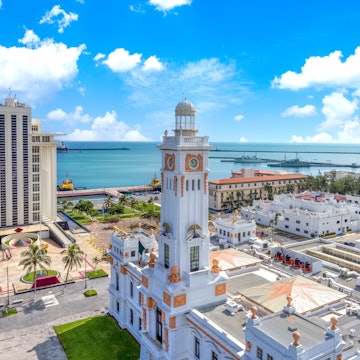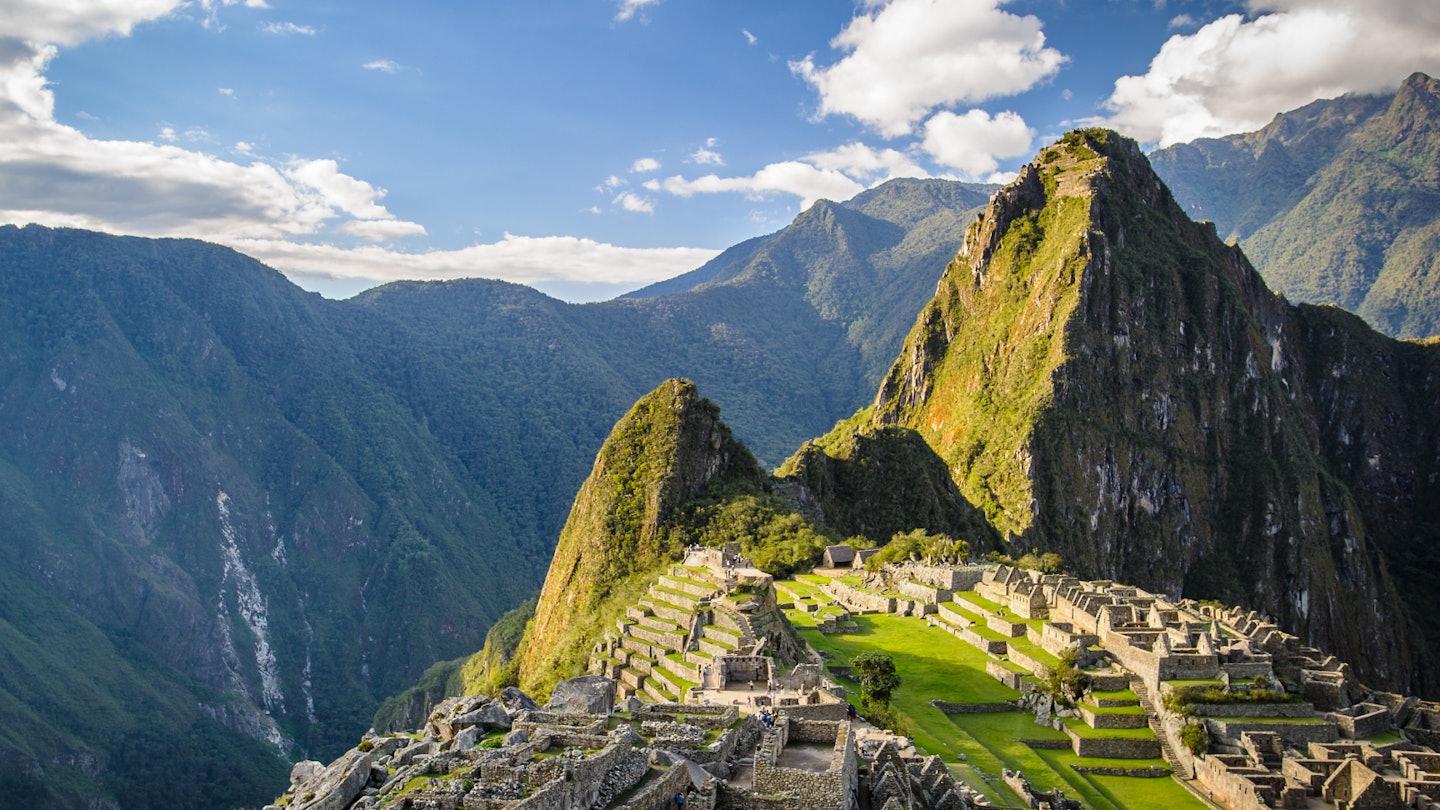
Minding Machu Picchu: how to see Peru’s most famous ruins responsibly

Jan 21, 2018 • 6 min read

It’s one of the world’s most spectacular archaeological sites, yet Machu Picchu has become a victim of its own popularity, with the 2017 introduction of a timed ticketing system just one of several recent initiatives the Peruvian government – under pressure from Unesco – has implemented to protect it. However there are plenty of other ways visitors can help to preserve the iconic ruin for the future.

Consider an Inca Trail alternative
Like Machu Picchu itself, Peru’s famous Inca Trail has suffered from an increase in tourist numbers over the years, with permits for the classic four-day trek now limited to just 500 per day (including guides and porters) to limit damage to the trail and the fragile ecosystems it weaves through. If you’re flexible, consider one of the more sustainable and far less crowded Inca Trail alternatives, most of which include sections on authentic Inca trails. Two excellent options include the Salkantay Route, a five-to-eight-day, high-altitude hike through the mountains surrounding Machu Picchu, and the Lares Route, a less demanding but more culturally immersive multi-day expedition through the Lares Valley highlands, tucked up behind the Sacred Valley.

Choose guides, tours and accommodations wisely
These days, all visitors to Machu Picchu are required to enter the site with a professionally qualified and authorized guide. Inca Trail and other hiking operators, however, are not always so qualified. Take your time to research operators, being sure to source one with a history of responsible tourism practices including environmental protection, cultural engagement, and paying staff – especially porters – fairly. Porters’ rights are now protected in Peru, but many operators bend the rules by overloading porters (beyond the maximum permitted load of 20kg) or underpaying them – the standard daily wage is 45 soles, but responsible operators tend to pay at least twice that.

When it comes to choosing accommodation, opt for hotels and guesthouses that value both the environment and the local community. If you’re not sure, check out this article on how to pick a green hotel, and ask questions. Bedding down at homestays is also a great way to inject money straight into the local economy.
Stay off the ruins
Unlike Rome’s Coliseum or China’s Great Wall, Machu Picchu was not built to cope with the footfall of thousands every day, with many archaeologists and historians estimating the site housed just 1000 people at its peak. While daily visitors to Machu Picchu are now capped at 2500, plenty of tourists – typically motivated by snapping the perfect selfie – continue to touch the ruins and venture into roped-off areas. Not only can this behavior damage the ruins (even the simple transfer of oils contained on human skin can be corrosive), it can also pose a safety risk. In 2016, a German tourist fell to his death while posing for a photograph in an out-of-bounds area.

Support local artisans
Renowned for its textiles, silverwork and other handicrafts, the Sacred Valley offers bountiful opportunities for handicrafts shopping. As you’ll notice in the tourist markets, however, quality varies wildly. Seek out non-profits and social enterprises that support the production of authentic, high-quality products and pay artisans fairly. For high-quality textiles in Cuzco (the base for the region), don’t miss the Center for Traditional Textiles of Peru, the Inkakunaq Ruwaynin weaving cooperative, and Casa Ecologica. Buy directly from artisans where possible, but avoid products you suspect could be antiquities, as well those that are made from unsustainable natural resources such as hardwoods.
Don’t take souvenirs from archeological sites
Peru has battled to keep its antiquities within its borders since the Spanish arrived nearly 500 years ago. In 2011, Yale University returned thousands of artifacts excavated at Machu Picchu by explorer Hiram Bingham between 1912 and 1915, but thousands more continue to be spirited out of the country by both tourists and professional smugglers. If you do stumble across a potential antiquity at Machu Picchu or at any other archeological site, report it to the government. Pocketing a tiny pottery fragment you find in the dirt might not seem like a big deal – until you consider the consequences of Peru’s four million annual visitors having the same idea.

Avoid plastic and pack out your trash
While toilet paper only takes a few months to break down (longer in a dry climates like the Andes), no one wants to see it flapping around Peru’s archaeological sites, much less plastic food wrappers or bottles, which can take hundreds of years to degrade. Abiding by the ‘leave no trace’ principles of responsible hiking is crucial in helping to preserve Peru’s natural beauty, so come prepared with a waste disposal kit, and limit your plastic use wherever possible. When nature calls (for a number two), ensure you do your business 200ft away from a water source, and bury it in a hole at least six inches deep.

Respect local culture and customs
Taking the time to research your destination and learn a few words of the local language is an integral element of responsible travel. Given Quechua is the first language of many rural Andean people, including most Inca Trail porters, learning a few common Quechua phrases such as wuynus diyas (good morning) and solpayki (thank you) will be an asset to your language skills.
In terms of dress, be mindful that Peru is a relatively conservative country – neat casual attire is generally fine, but midriff and muscle tops push the limits of respectability, especially when visiting religious sites.
Don’t inadvertently support child labour
Whichever route you take to Machu Picchu, you’re likely to encounter young children touting cigarettes or postcards, or asking directly for money (using the euphemism propinita, or little tip). With countless studies showing that giving money to child workers (or beggars) perpetuates the cycle of poverty and keeps children out of school, responding to tots with a respectful ‘No, gracias’ may be the best way you can help them. If you want to do more, research organizations committed to tackling child poverty and chid labour, such as Save The Children and Childsafe to find out how you can help.

Be a respectful photographer
Machu Picchu and the Sacred Valley boast superb photo opportunities, but that doesn’t give you a license to snap away at anything that catches your eye. It’s respectful to ask permission before photographing local people, and if they request payment in return, one or two soles is fair compensation for the service they provide. When a child is involved, permission should ideally be sought from a parent, any any transaction conducted through that person.
If you’re traveling with a drone, check local laws before you launch it (drones are banned at Machu Picchu), and avoid flying it over people or private dwellings. Be mindful also how the presence of the drone might affect other tourists enjoying the serenity of the Peruvian Andes.
Sarah Reid traveled to Machu Picchu with support from Mountain Lodges of Peru (mountainlodgesofperu.com) and Cox and Kings (coxandkings.co.uk). Lonely Planet does not accept freebies for positive coverage.

Plan with a local
Experience the real PeruLet a local expert craft your dream trip.












